Need An Answer To Your Foot And Ankle Questions? Read Through Our FAQ
Are you looking for fast information to relieve the pain in your feet? We have collected the most common foot and ankle questions and have posted the answers here, allowing our patients to start their recovery immediately. Browse our FAQ page or use the search bar to find questions about your condition.
Ailing Feet Impacts Body Health from Toes, Heels up to the Spine
FEET ARE YOUR BODY FOUNDATION. Whenever you stand, walk, play or train. Supporting your weight-bearing skeletal system in optimal alignment is key. So your feet, ankles, legs, knees, hips and spine all remain in top shape. Best area to provide body alignment and support is the from bottom of your feet, from heels. How to get it right? By combining the benefits of wearing custom-made orthotics precisely fit into prescription shoes.
Know the Three Types of Prescription Shoes?
Prescription Shoes or Prescription Orthopedic Shoes can be:
- custom-made from raw material to accommodate severe and rigid foot deformities such as toes or forefoot amputation, Charcot’s foot, high-arched foot with prominent exostoses;
- custom-fitted by adding a rocker sole to offload rigid and sore toe joints, adding thickness on the outer sole of a short leg, adding felt pads to stabilize narrow heels or punching out an area of friction such as a prominent bunion or bone bump deformity;
- pre-fabricated or off-the-shelf with special characteristics to improve specific foot functions, to compensate acquired or congenital foot dysfunctions or deformities and to supplement the benefits of wearing custom-made foot orthotics designed to support, align, offset overloaded foot areas ,and much more.
When Should you Consider Wearing Prescription Orthopedic or Prescription Stylish Shoes?
Whenever your Doctor of Podiatric Medicine, Podiatrist or Chiropodist’s examination reveals that your are affected by one of – or by a combination of – the following foot, ankle, leg, knee, hip or back dormant or painful condition(s):
- plantar fasciitis and any type of foot and ankle tendonitis (such as Achilles, peroneal and tibial posterior tendon inflammation)
- Morton’s neuroma and toe joint capsulitis|bursitis|osteoarthritis|deformities
- repetitive ankle sprains and shin splints
- any foot|ankle|knee|hip|back joint pain – secondary to any foot dysfunction (associated with overpronation, flattening and collapsing feet or to underpronation)
- many other foot and weight-bearing structure or joint limiting conditions.
N.B. Your main foot and weight-bearing skeletal conditions should be part of your orthopedic shoe prescription. Orthopedic prescription shoes can be custom-made, modified
Prescription Shoes issued from Medical Practitioners recognized by CRA such as Podiatrists and Chiropodists are eligible to a Medical Expense Tax Credit
According to CRA, you may be eligible to obtain a tax credit by including the cost of your prescription shoes into your overall medical expenses. If so, you will get a tax saving of 20%. Then you may save up to $30.00 on a new pair of shoes priced at $150.00. All you need to do is to submit your shoe invoice/receipt along with your personal shoe prescription signed by your Podiatrist or Chiropodist.
Prescription Orthopedic Shoes may be covered by your Insurance.
Prescription Shoes may be eligible under the benefits of your Insurance Plan if such coverage is part of your specific plan. We recommend you call your Insurer to double-check with them as coverage details vary depending on plan design. In need for clarification? Call your insurer at the time of your visit so we may assist in suggesting precise questions and in interpreting responses.
A Shoe Prescription Must be Detailed and Specific Enough to meet Insurance Claim Requirements
This why your shoe prescription must include:
- the type of shoe prescribed (custom-made, custom-fitted or pre-fabricated);
- the medical foot diagnoses;
- the main shoe features you need to get.
Diabetes: Its Effects on Feet
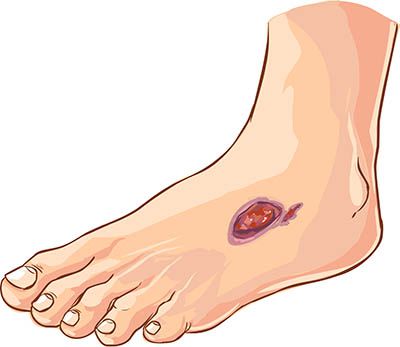 Diabetes can affect the feet in a number of different ways. The first is infection, which is one of the most common complications of the diabetic foot. Because the disease causes a reduction in immune response, a patients ability to fight infection is decreased. Another complication is neuropathy, which causes decreased sensitivity to pain and change in temperature. This may cause a patient to underestimate or not even notice a foot problem. It might also cause a shutdown of perspiration, leading to dry, cracked skin that is more prone to infection.
Diabetes can affect the feet in a number of different ways. The first is infection, which is one of the most common complications of the diabetic foot. Because the disease causes a reduction in immune response, a patients ability to fight infection is decreased. Another complication is neuropathy, which causes decreased sensitivity to pain and change in temperature. This may cause a patient to underestimate or not even notice a foot problem. It might also cause a shutdown of perspiration, leading to dry, cracked skin that is more prone to infection.
With a diabetic foot, decreased blood flow can cause injuries to heal more slowly. A wound as small as blister can become a big problem if it becomes infected and spreads to other parts of the body. This why daily self-inspections of your feet and regular care from a professional are so important. For more help and answers regarding diabetic feet, call Ottawa Foot Clinic at (613) 595-9700. Well be happy to help.
Exercise can be one important element in improving the bodys circulation and fighting the effects of peripheral neuropathy in the feet. However, a program must be carefully planned to ensure someone who suffers from this condition is getting the most benefit from their exercise at the least risk possible of injury to the feet.
A good exercise regimen for a patient with neuropathy will start slowly and gradually build up over time according to the needs and
abilities of the patient. Low-impact exercises such as tai chi, yoga, and swimming place little-to-no stress on the feet and can be ideal additions to a program.
Before starting any sort of fitness program, patients with neuropathy should always speak with a professional to ensure what theyre doing is safest and best for their feet. Our expert team can treat and help patients manage peripheral neuropathy. Contact our Ottawa Foot Clinic today by calling (613) 595-9700 or use our convenient online form.
Sesamoiditis: causes
Causes of sesamoiditis are varied but all have to do with the same thing: damage from a sudden impact or, most often, from long-standing overload causing inflammation, swelling and tenderness down to the tiny sesamoid bones and tendons running under your big toe joints. Some of the most common reasons this happens are:
- Overpronation (faulty foot mechanics/foot dysfunction) – your foot is rolling inwards as you walk thus putting extra pressure under the big toe which creates irritation and pain
- Foot structure having unusually large sesamoid bones can put extra pressure on them and cause irritation and inflammation
- Repetitive impacts due to a specific physical activity even healthy people can develop this condition if you increase activity too quickly, sustain same activity for too long or repeat it too often. Activities that put you more at risk include – but are not limited to – squash, tennis, running on the ball of your foot, and squatting (such as a baseball catcher or weight lifter)
- Wearing shoes that put too much pressure on the bones (high heels, tight toes, very thin soles with not enough cushioning, not enough support for the arch)
- Aging your bone and tendon tissues degenerate over time and become weaker
- Premature osteoarthritis wear and tear on the bones and joints by your big toes
If pain under your big toe slows you down, chances are that it will not go away by itself. Do not let your supportive ailing foot structures degenerate even more. Avoid any unnecessary surgery! Call Ottawa Foot Clinic at (613) 595-9700 to set up an evaluation. We will determine the exact root cause of your specific condition and design the right treatment plan to get you out of pain fast! Call today to get this problem fixed right away.
Maintaining healthy balance can be crucial for older patients as well as those of any age who have reduced sensation in their feet from conditions such as peripheral neuropathy. With the use of simple exercise, however, balance can be slowly improved or maintained.
Exercises that can help with stability include:
Balancing on One Leg Stand next to a stable object in case you need something to grab onto. Attempt to balance on each leg for 30 seconds.
Tightrope Walk No actual rope involved: simply walk heel-to-toe forwards and backwards, one foot in front of the other.
Tiptoes Stand beside an object that can be grabbed onto, if needed. Slowly rise up onto your toes and stay in that position as long as possible without holding onto anything. Repeat at least three times per day, trying to increase your time.
Our team can help you organize the best program and treatments for improving your stability and finding relief from pain and discomfort. Reach us at Ottawa Foot Clinic by calling (613) 595-9700 and we will be happy to set up an appointment with you.
Jogger’s Foot a type of Tarsal Tunnel Syndrome affecting Runners
 Entrapment of the medial plantar nerve is seen most commonly in athletes and is called “jogger’s foot”. It is theorized that forceful pronation of the foot during running puts excessive stretch and compression on the medial plantar nerve, resulting in tarsal tunnel syndrome. There may be vague discomfort or pain, with burning, tingling or numbness in the inner plantar aspect of the affected foot. How do we address this problem? Treatment is directed towards the underlying causes and aggravating factors. High-precision, custom-made orthotics with a deep heel cup and an extended medial flange may help in providing the necessary foot guidance and support whenever standing and running. The bottom line: no one needs to suffer from this sort of pain anymore. Start by making your appointment with one of our doctors of podiatric medicine at Ottawa Foot Clinic.
Entrapment of the medial plantar nerve is seen most commonly in athletes and is called “jogger’s foot”. It is theorized that forceful pronation of the foot during running puts excessive stretch and compression on the medial plantar nerve, resulting in tarsal tunnel syndrome. There may be vague discomfort or pain, with burning, tingling or numbness in the inner plantar aspect of the affected foot. How do we address this problem? Treatment is directed towards the underlying causes and aggravating factors. High-precision, custom-made orthotics with a deep heel cup and an extended medial flange may help in providing the necessary foot guidance and support whenever standing and running. The bottom line: no one needs to suffer from this sort of pain anymore. Start by making your appointment with one of our doctors of podiatric medicine at Ottawa Foot Clinic.
What are Plantar Warts?
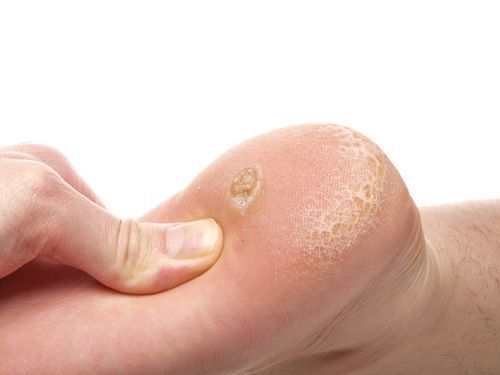 Plantar warts are caused by human papilloma viruses (HPVs) that infect the skin cells. These sneaky viruses generally enter the body through small cuts or abrasions in the skin. They are only known as plantar warts when they appear on the soles of the feet. Although these kinds of warts can appear at any age, they are most commonly seen in teens between the ages of 12 and 16. The virus that causes these warts is often picked up by walking barefoot on dirty surfaces; most notably in warm, moist environments such as gyms, swimming pools, and public showers.
Plantar warts are caused by human papilloma viruses (HPVs) that infect the skin cells. These sneaky viruses generally enter the body through small cuts or abrasions in the skin. They are only known as plantar warts when they appear on the soles of the feet. Although these kinds of warts can appear at any age, they are most commonly seen in teens between the ages of 12 and 16. The virus that causes these warts is often picked up by walking barefoot on dirty surfaces; most notably in warm, moist environments such as gyms, swimming pools, and public showers.
If you suspect you have warts on your feet, it is best to see a doctor of podiatric medicine for a correct diagnosis and treatment plan. Call (613) 595-9700 to schedule an appointment with Ottawa Foot Clinic. We can offer the safest and most effective treatments for warts.
Achilles Tendonitis
 The Achilles tendon (calcaneal tendon) is the largest and strongest tendon in the human body. But, it has one of the lowest healing capacity of the human body due to the reduced density of blood vessels found within and around this crucial structure in human locomotion. Pain at the insertion of the Achilles tendon at the posterior aspect (back) of the heel bone is called Calcaneal tendon enthesopathy, calcaneal enthesitis or tendonitis. Its root cause is believed to be related to some sort of biomechanical imbalance, such as overpronation. Excessive pronation or excessive foot collapse upon weight bearing is constantly forcing the heel to roll inwards. The end-result is a repetitive overstretch of the Achilles tendon as the calf muscle is fired to compensate in pulling the heel back into normal straight alignment. A long-standing tension within the affected tendon may also be induced by genetically short or tight calf muscles. Aggravating factors are a sedentary lifestyle, obesity and athletic overuse. To design the best possible treatment plan for this condition, we will take x-rays to closely evaluate the alignment/misalignment of the 26 bones in your affected foot/feet and to rule out/confirm the presence and extent any bone spur/deformity. A gait analysis will detect any biomechanical imbalance and signs of overpronation while providing clues to design the most effective custom-made orthotic devices to put you back in balance and to put a stop to the excessive traction imposed into the tendon at stake. You may also need a series of 3 weekly shockwave and laser treatments to help you regenerate the damage structure in removing the scar tissue while calming down the pain and irritated nerve endings.
The Achilles tendon (calcaneal tendon) is the largest and strongest tendon in the human body. But, it has one of the lowest healing capacity of the human body due to the reduced density of blood vessels found within and around this crucial structure in human locomotion. Pain at the insertion of the Achilles tendon at the posterior aspect (back) of the heel bone is called Calcaneal tendon enthesopathy, calcaneal enthesitis or tendonitis. Its root cause is believed to be related to some sort of biomechanical imbalance, such as overpronation. Excessive pronation or excessive foot collapse upon weight bearing is constantly forcing the heel to roll inwards. The end-result is a repetitive overstretch of the Achilles tendon as the calf muscle is fired to compensate in pulling the heel back into normal straight alignment. A long-standing tension within the affected tendon may also be induced by genetically short or tight calf muscles. Aggravating factors are a sedentary lifestyle, obesity and athletic overuse. To design the best possible treatment plan for this condition, we will take x-rays to closely evaluate the alignment/misalignment of the 26 bones in your affected foot/feet and to rule out/confirm the presence and extent any bone spur/deformity. A gait analysis will detect any biomechanical imbalance and signs of overpronation while providing clues to design the most effective custom-made orthotic devices to put you back in balance and to put a stop to the excessive traction imposed into the tendon at stake. You may also need a series of 3 weekly shockwave and laser treatments to help you regenerate the damage structure in removing the scar tissue while calming down the pain and irritated nerve endings.
Cryoanalgesia for Pain Relief
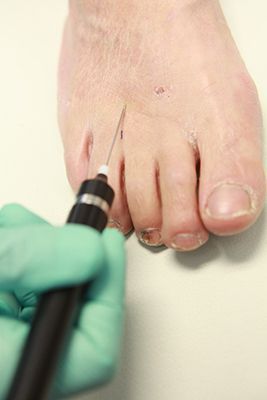 Cryoanalgesia, a form of minor surgery, involves the application of intense cold to an affected nerve in order to provide long-term pain relief for certain foot conditions. A temperature of about -82 degrees Celsius is applied to the spot for about 3 minutes in most cases, creating a nerve block that stops the transmission of pain. The procedure involves a very small incision that often requires no sutures. It takes 15-30 minutes, is minimally invasive, and relatively painless. Conditions that frequently benefit from this form of cold therapy include unresponsive plantar fasciitis, tarsal tunnel syndrome, and Mortons neuroma, among others.
Cryoanalgesia, a form of minor surgery, involves the application of intense cold to an affected nerve in order to provide long-term pain relief for certain foot conditions. A temperature of about -82 degrees Celsius is applied to the spot for about 3 minutes in most cases, creating a nerve block that stops the transmission of pain. The procedure involves a very small incision that often requires no sutures. It takes 15-30 minutes, is minimally invasive, and relatively painless. Conditions that frequently benefit from this form of cold therapy include unresponsive plantar fasciitis, tarsal tunnel syndrome, and Mortons neuroma, among others.
If you are suffering from foot pain, it isnt something you should just resign yourself to living with. Contact Ottawa Foot Clinic at (613) 595-9700 to schedule an appointment with a foot specialist. We can perform a full evaluation of your condition and offer the best treatments to suit your specific needs.
Imagine your smile, as you put your foot on the ground without pain, right after your first shockwave treatment!
 When your heel pain is so severe that you are limping into our clinic, we gently initiate your treatment at a very low level of intensity so it comfortable for you. As your nerve endings will progressively get numb, we ask you to confirm when it is time to gradually increase the intensity level up to the therapeutic zone. Shockwave therapy is a clinically-proven form of treatment for unresponsive and stubborn types of long-standing heel pain from plantar fasciitis or Achilles tendonitis. This treatment involves low-frequency pulse waves delivered locally to the foot surface using a hand-held applicator. It is safe and non-invasive. The use of a shockwave device is gently breaking up the scar tissues that compress your nerve endings; it also restore the natural function, elasticity and flexibility of the affected ligament or tendon. It is what many urologists use with a high success rate towards breaking up kidney stones! This is the exciting thing about this therapy: it ends the pain while promoting faster and stronger tissue repair. You will need to have three sessions for optimal and sustainable results, depending on your personal medical profile.
When your heel pain is so severe that you are limping into our clinic, we gently initiate your treatment at a very low level of intensity so it comfortable for you. As your nerve endings will progressively get numb, we ask you to confirm when it is time to gradually increase the intensity level up to the therapeutic zone. Shockwave therapy is a clinically-proven form of treatment for unresponsive and stubborn types of long-standing heel pain from plantar fasciitis or Achilles tendonitis. This treatment involves low-frequency pulse waves delivered locally to the foot surface using a hand-held applicator. It is safe and non-invasive. The use of a shockwave device is gently breaking up the scar tissues that compress your nerve endings; it also restore the natural function, elasticity and flexibility of the affected ligament or tendon. It is what many urologists use with a high success rate towards breaking up kidney stones! This is the exciting thing about this therapy: it ends the pain while promoting faster and stronger tissue repair. You will need to have three sessions for optimal and sustainable results, depending on your personal medical profile.
Ankle Sprains are not to be taken lightly
Often emergency patients can be seen the same day – that is our goal, so don’t hesitate to contact us immediately if something like this happens to you. 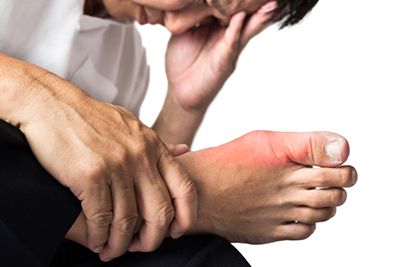 Ankle sprains are not to be taken lightly; if they are severe enough to cause significant pain a foot specialist should be consulted as soon as possible. Our pain laser protocol is very effective to quickly calm down the swelling and pain inherent to this condition. The rationale of laser use in most acute ankle sprains is: the faster the swelling and inflammation is eliminated, the faster the return to your preferred physical activities. Additionally, any history of repetitive ankle sprains should be investigated to rule out the presence of a mechanical foot imbalance…so don’t delay!
Ankle sprains are not to be taken lightly; if they are severe enough to cause significant pain a foot specialist should be consulted as soon as possible. Our pain laser protocol is very effective to quickly calm down the swelling and pain inherent to this condition. The rationale of laser use in most acute ankle sprains is: the faster the swelling and inflammation is eliminated, the faster the return to your preferred physical activities. Additionally, any history of repetitive ankle sprains should be investigated to rule out the presence of a mechanical foot imbalance…so don’t delay!
What is Arthritis?
 The word arthritis specifically means joint inflammation, but it is used for a wide spectrum of condition and symptom variations of this painful disease. It often attacks the feet because there are so many joints in them and they experience a lot of stress throughout years of weight-bearing.
The word arthritis specifically means joint inflammation, but it is used for a wide spectrum of condition and symptom variations of this painful disease. It often attacks the feet because there are so many joints in them and they experience a lot of stress throughout years of weight-bearing.
Once you have deterioration in the joints, they usually do not heal (although they can be replaced surgically in some instances). So yesthe disease is permanent in that sense. However, the inflammation and pain can come and go, being worse at some times than others, and symptoms can also be treated with medication to lessen their impact on your life.
At Ottawa Foot Clinic, our team has much experience dealing with complications from arthritis. We can monitor the condition of your feet and help you find a measure of relief from the painful symptoms. We work as a team with your regular physician, and if deterioration becomes extreme, we will work with an orthopedic surgeon to explore surgical options as well.
Concerned about your painful feet? Wondering if you have arthritis? Give us a call at (613) 595-9700 and let us help you find the best treatment.
How do orthotics work?
Like most of our patients, you may elect to use two pairs of orthotics to cover all your needs on a daily basis. Full-length, custom-made orthotic devices are to be inserted inside your orthotic-friendly shoes, running shoes, golf shoes, hiking boots or sandals in replacement of the removable insole. Thin 3/4, custom-made orthotics are meant to fit into tight dress or dancing shoes, dress winter boots, soccer cleats, skates or ski boots. According to the findings a thorough clinical and radiological exam, foot orthoses are specifically designed to improve the overall alignment of the weight-bearing bones and joints within your feet and ankles, thus straightening up your legs, knees, hips and back. Foot orthoses are to be worn 16 hours each day under the heel, arch and ball of your foot. They are specially and intricately designed to realign your ankle and heel bones to promote a better force transfer down to toes and up to your neck (yes, all that way!) to alleviate pain in your feet, legs, knees, hips and spine, as well as to restore balance, improve sports performance, prevent or alleviate osteoarthritis, and relieve foot fatigue at the end of the day. They work hard for you! And don’t forget: at Ottawa Foot Clinic, you get a satisfaction guarantee. If you have any problem with the way you were welcomed and served, let us know so we fix the problem fast in a way to exceed your expectations.
Controlling Gout
If you have had an attack of gout in your big toe, it goes without saying that you would definitely like to avoid another one. Following a gout diet can be a step in that direction. Once you learn which foods to avoid with gout, you can stop them from triggering that severe pain in your toe joints and exercise more control over the disease. Here is a helpful classification of foods from the Arthritis Foundation: 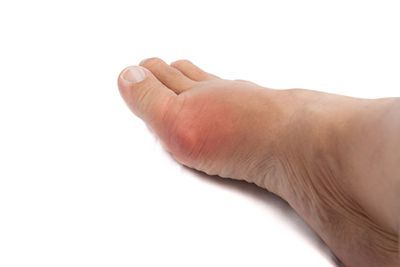
- High purine foods include some seafood and certain fish like anchovies and sardines, and meats like bacon, turkey, venison, and liver.
- Moderate purine foods include beef, chicken, pork and ham, and shellfish like shrimp and oysters, and certain legumes, and some veggies like spinach.
- Beverages to avoid include all alcoholic beverages and any drinks containing fructose.
Other things such as dehydration, certain medications, and medical stress can also be gout triggers, so you may best be able to manage the disease with prescription medications. If you need help figuring out what is causing big toe pain and how to treat it, call the experts at Ottawa Foot Clinic at (613) 595-9700 to set up an appointment.
To prevent fungal nails, you need to get rid of all the things fungus loves. They like to feed on dead tissue, so proper hygiene like nail trimming and keeping the skin on your feet clean is a first step.
They love warm, moist areas, so do what you can to maintain dry feet. That means drying them well after washing, wearing socks and shoes that breathe so sweat doesnt build up, and airing them out now and then during the day. It may also mean treating hyperhidrosis (excessive perspiration or sweaty feet) if that is a problem for you.
You also need to take care not to make contact with these microorganisms or spread them. That means wearing foot protection in showers, pool decks, saunas, and gyms. It also means not sharing socks, shoes, pedicure tools, or bath linens with another person. If you treat or touch a fungal nail, make sure you wash your hands before touching anything else.
You can also treat your shoes with antifungal sprays or powders or discard old ones so you dont keep re-infecting your feet.
Ottawa Foot Clinic has designed a combination of anti-fungal nail treatments that is very effective. Call our office in Ottawa today by dialing (613) 595-9700.
In-curved Big Toenail
 An Ingrown toenail could be caused by a several different things. In some cases, the excessive nail curve is believed to be a genetic problem where the nail plate may be too wide for the affected toe. It is also possible that an abnormal gait pattern may have created excessive pressure in the tissues surrounding the nail of the big toe thus progressively deforming the nail and root. Sometimes other forms of pressure or sudden impact, such as from a toe injury or as the prolonged wearing of ill-fitting shoes, can cause the nail to grow back with a different shape and an increased curve inwards down into the tissues.
An Ingrown toenail could be caused by a several different things. In some cases, the excessive nail curve is believed to be a genetic problem where the nail plate may be too wide for the affected toe. It is also possible that an abnormal gait pattern may have created excessive pressure in the tissues surrounding the nail of the big toe thus progressively deforming the nail and root. Sometimes other forms of pressure or sudden impact, such as from a toe injury or as the prolonged wearing of ill-fitting shoes, can cause the nail to grow back with a different shape and an increased curve inwards down into the tissues.
Regardless of the source of your curved and digging nail, we are happy to provide help if it wont go away, keeps coming back, or shows signs of infection. Dont try to perform bathroom surgery on yourself; you might cause yourself more pain and damage! Call Ottawa Foot Clinic at (613) 595-9700 to schedule your appointment today.


